
Servient – How does it fare?
I love it when I can get my teeth into new technology, whether that is a new phone, TV, Camera or software. I am like a kid at Christmas and my present is Servient.
Who/what is Servient?
Servient is one of the new breed cloud-based eDiscovery/Disclosure review tools. It offers processing, review, analytics and production capabilities.
What they say:
Servient has over a decade of experience in developing software to manage the ever-increasing data volumes involved in legal matters. We built our solution from the ground up, incorporating machine learning to drive efficiency. The result is a unified platform; processing, search & cull and review as an iterative and integrated process. Since we wrote the software, we support it and help you manage the process effectively. The culmination of our experience is a proven eDiscovery solution managed by industry experts
https://www.servient.com/about-us
Using Servient could not be any easier; the platform has been designed with the user in mind. Data flows through a simple waterfall methodology dripping from one stage to another, starting with Data Ingestion. In total, there are four sections to Servient:
- Data Ingestion
- Data Archive
- Search and Cull
- Document Review
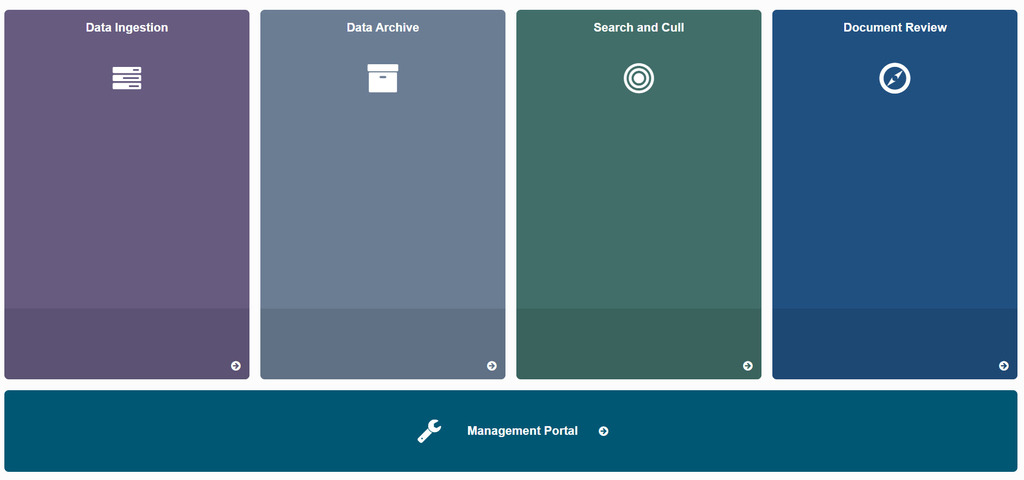
If there is a concern regarding data security, as it is a cloud based solution, then Servient handles this by requiring all data to be uploaded in a VeraCrypt container. Once uploaded the user will mount the VeraCrypt container and create a new request within Servient. The new request requires some basic data entry:
- Inventory ID
- Data Type (Raw or Load File)
- Load into
- Repository
- Matter
- Case
- Choose the processing template
- Map Data
- Custodian
- Source
- Time zone
There is a really strong, clear and concise dashboard containing an insight as to what has been ingested into a Data Archive. The dashboard shows the following information:
- Total Volume of Data
- Volume per custodian
- File Types
- File Breakdown

Once the data has been Ingested and processed into the repository the user is able to decide whether to search and cull it or send it straight to review.
When moving the data out of the Data Archive there is an option to reduce the set size by de-duping; whether pushing the data into Search and Cull or Document Review.
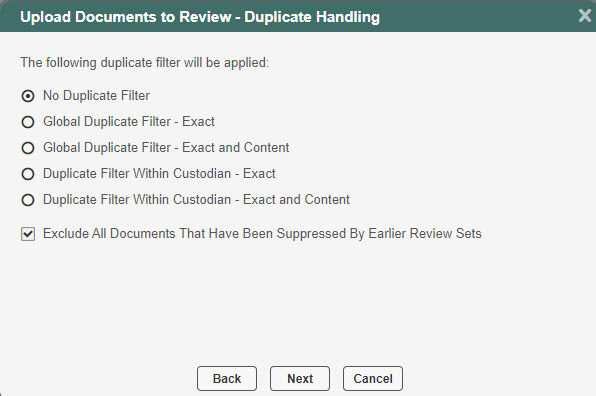
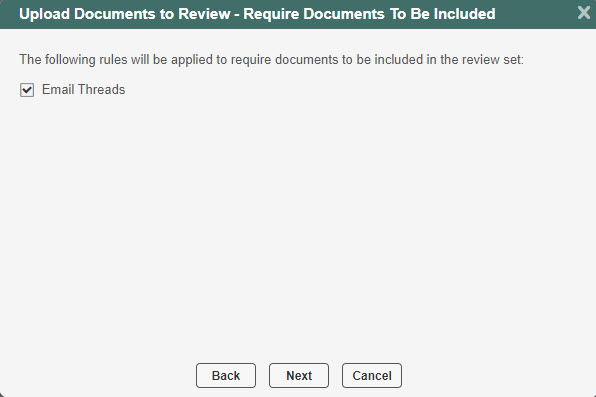
In the Search and Cull area, the user has the ability to run simple or complex searches, using keywords and dates to reduce the document population. A very good query builder, which is detailed and allows the user to search metadata and text.
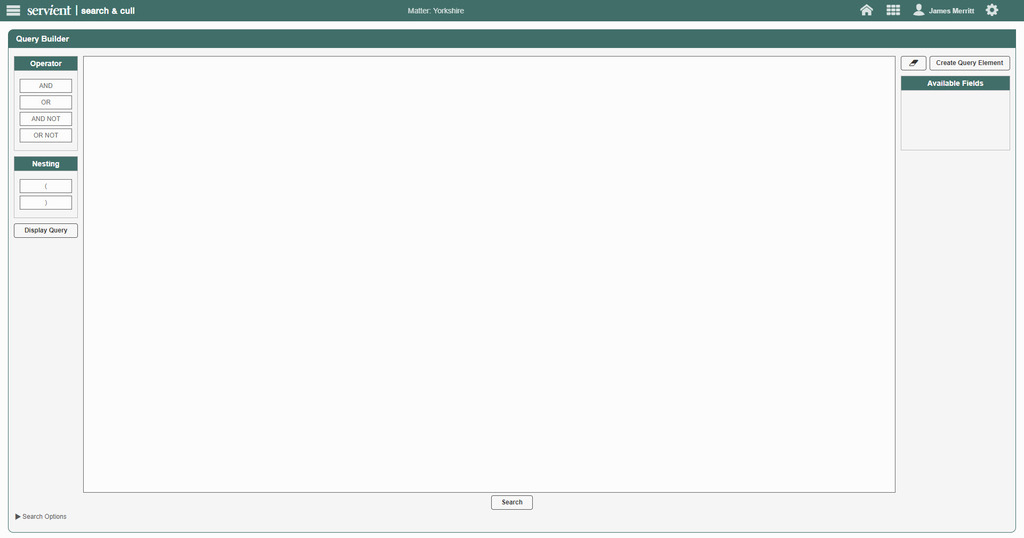
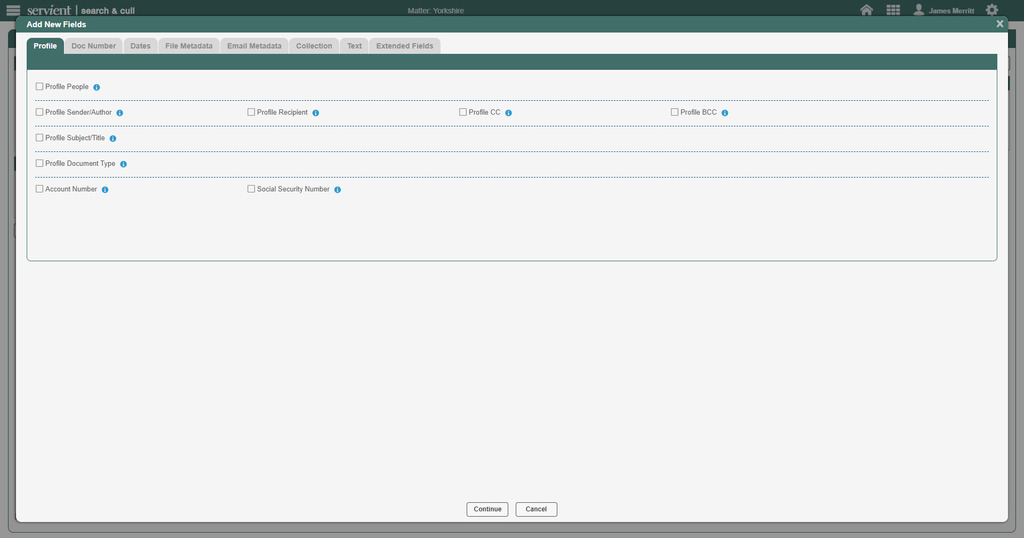
When the data is ready to go into the final stage the user is offered the opportunity to run de-dupe again, it is at this stage that I would recommend running the de-dupe.
In conclusion Servient is very simple to use. The interface has been written with the user in mind, making it very user friendly. It comes with all the bells and whistles, an analytics suite that includes email threading, clustering and predictive coding. It didn’t take long for me to get up to speed on using the software, though I am not the yard stick that should be used to measure against, as it is designed for lawyers, not the technical consultants.
There are some very nice touches within the different sections of Servient, such as the summary of documents loaded into Review, the cluster wheel and the ability to move data into more than one matter.
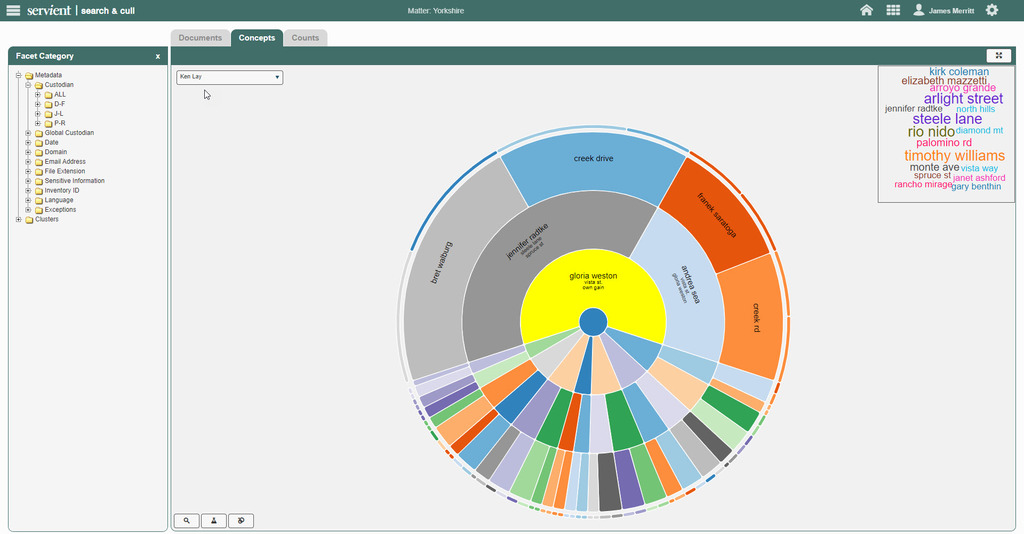
If I have one concern it is, Servient does not show the user what it is doing. When processing the data there isn’t a summary of what has been processed, a count of documents that have failed or been partially text stripped. Servient simply allows the user on to the next stage. This is what a non-technical user will want, fast streamlined processing to allow them to move on with their review cycle.
Overall Servient definitely has a big future, good easy to use functionality, coupled with a strong pricing plan.

